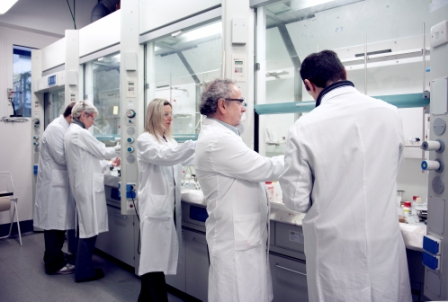
A IEO, IFOM and UNIMI joint research project, supported by AIRC, has pinpointed a drug able to strike directly breast cancer stem cells making a huge step forward in the fight against chemoresistance.
Preventing a breast tumor to start growing again even after chemotherapy could soon be a reality thanks to newly conducted research lead by three of the most important research centers in Milan: The European Institute of Oncology (IEO), The University of Milan (UNIMI) and the Institute of Molecular Oncology (FIRC IFOM). The research was supported by AIRC, the Italian Association for Cancer Research.
The study results, published in EMBO Molecular Medicine on March 15th, show in a preclinical model how Nutlin (a drug already in clinical development) is able to eliminate the cancer stem cells not previously eliminated by chemotherapy and are thus responsible for the further tumor growth.
The association of standard chemotherapy with Nutlin means the probability of a complete recovery is much higher. This study is still at the preclinical stage and clinical trials are required to confirm these results.
“A drug able to hit breast cancer stem cells is a historical landmark “ – comments Daniela Tosoni, Researcher of the IEO Molecular Medicine for Care Program and first author of the paper. “Many patients, after being treated with chemotherapy, shows sign of tumor remission initially, however when the treatment is interrupted the tumor relapses due to the remaining resistant stem cells. This phenomenon is called “chemoresistance”: research is currently demonstrating how the chemoresistance is strongly linked to the presence of cancer stem cells. These cancer stem cells are responsible for the never ending re-development of the tumor: as long as these stem cells exist the tumor will grow even if the tumor cells keep on being destroyed. This is where Nutlin comes in: we have discovered that Nutlin-3 targets specifically cancer stem cells and in our study we combined it with standard chemotherapy i.e. Paclitaxel. The preclinical results show that this combination increases the tumor response to chemotherapy and blocks the tumor growth after the therapy is put on hold”.
“It’s an important finding in the line of research that IEO, IFOM and UNIMI are carrying out. The aim is to study the relationship between the disease aggression, the presence of cancer stem cells and the role of the Numb protein in breast cancers – added Salvatore Pece, Vice Director of IEO Molecular Medicine for Care Program and Professor at the University of Milan. Previous studies have shown that the Numb protein acts as a perfect tumor suppressor and is linked to another protein - p53- already known for its role in stopping tumor growth. If the Numb protein gets damaged then p53 levels drop and this double loss mechanism is the main reason for developing much more aggressive tumors with increased numbers of cancer stem cells in them. We have therefore decided to focus on the bond between the Numb protein and cancer stem cells: our studies showed that the decrease in Numb and p53 levels increase the probability of cancer stem cell appearance and rapid spread. So in the absence of the Numb protein, the breast tumor is free to develop and spread even after the chemotherapy".
“The challenge was then to restore the p53 levels that acts as a shield against the cancer stem cells of the more aggressive and chemoresistant tumors – concludes Pier Paolo Di Fiore, Director of the IEO Molecular Medicine for Care Program and Group Leader at both IFOM and the University of Milan. We discovered that Nutline-3 (a molecule already in the clinical develop phase) is able to reinstate the correct p53 quantity in breast cancer patients with a lack of NUMB protein, making the tumor less aggressive and less rich in stem cells. The joint action of Nutlin-3 and Paclitaxel has the double consequence of enhance the chemotherapy effect and obstructing the tumor growth after the treatment. These results now have to be translated in something concrete for our patients through a series of clinical trials. We are positive but still cautious that we will manage to transfer the research into treatment in order to obtain more efficient and at the same time less toxic treatments”.
Article by Di Fiore Pier Paolo